Connectivity
Example
In the above example, it is possible to travel from one vertex to another vertex. Here, we can traverse from vertex B to H using the path B -> A -> D -> F -> E -> H. Hence it is a connected graph. Example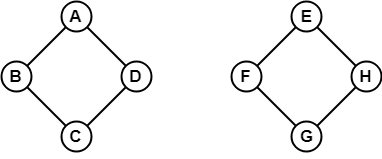
In the above example, it is not possible to traverse from vertex B to H because there is no path between them directly or indirectly. Hence, it is a disconnected graph. Let's see some basic concepts of Connectivity. 1. Cut VertexA single vertex whose removal disconnects a graph is called a cut-vertex. Let G be a connected graph. A vertex v of G is called a cut vertex of G, if G-v (Remove v from G) results a disconnected graph. When we remove a vertex from a graph then graph will break into two or more graphs. This vertex is called a cut vertex. Note: Let G be a graph with n vertices:
Example 1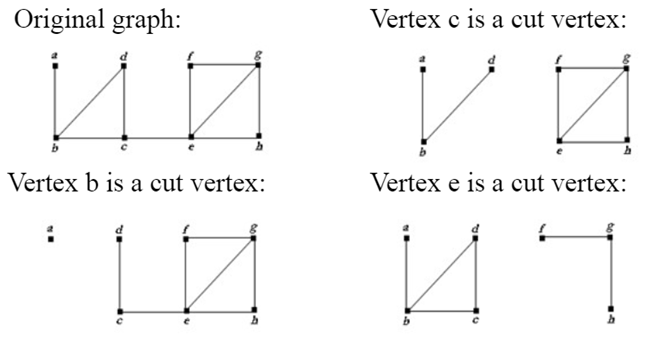
Example 2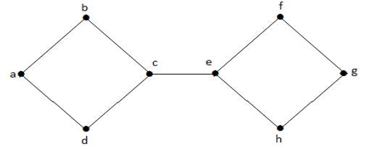
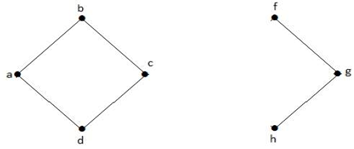
In the above graph, vertex 'e' is a cut-vertex. After removing vertex 'e' from the above graph the graph will become a disconnected graph. 2. Cut Edge (Bridge)A cut- Edge or bridge is a single edge whose removal disconnects a graph. Let G be a connected graph. An edge e of G is called a cut edge of G, if G-e (Remove e from G) results a disconnected graph. When we remove an edge from a graph then graph will break into two or more graphs. This removal edge is called a cut edge or bridge. Note: Let G be a graph with n vertices:
Example 1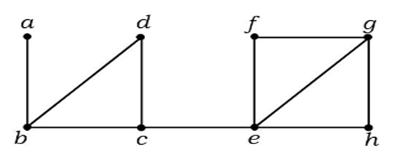
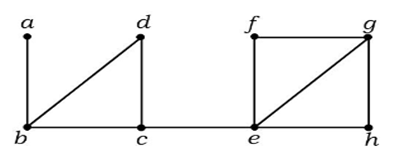
In the above graph, edge (c, e) is a cut-edge. After removing this edge from the above graph the graph will become a disconnected graph. Example 2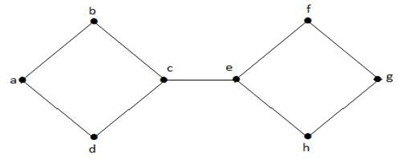
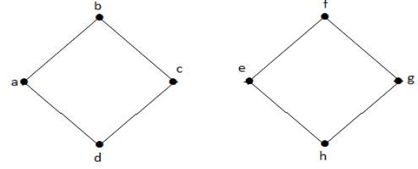
In the above graph, edge (c, e) is a cut-edge. After removing this edge from the above graph the graph will become a disconnected graph. 3. Cut SetIn a connected graph G, a cut set is a set S of edges with the following properties:
Example 1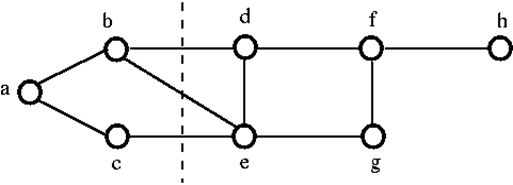
To disconnect the above graph G, we have to remove the three edges. i.e. bd, be and ce. We cannot disconnect it by removing just two of three edges. Hence, {bd, be, ce} is a cut set. After removing the cut set from the above graph, it would look like as follows: 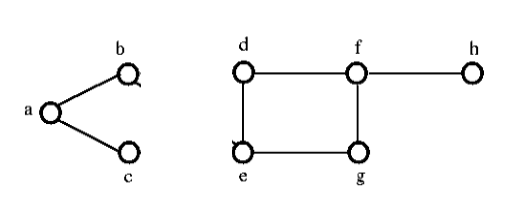
4. Edge ConnectivityThe edge connectivity of a connected graph G is the minimum number of edges whose removal makes G disconnected. It is denoted by λ(G). When λ(G) ≥ k, then graph G is said to be k-edge-connected. ExampleLet's see an example, 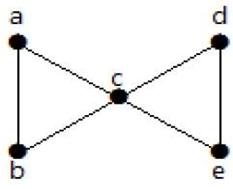
From the above graph, by removing two minimum edges, the connected graph becomes disconnected graph. Hence, its edge connectivity is 2. Therefore the above graph is a 2-edge-connected graph. Here are the following four ways to disconnect the graph by removing two edges: 
5. Vertex ConnectivityThe connectivity (or vertex connectivity) of a connected graph G is the minimum number of vertices whose removal makes G disconnects or reduces to a trivial graph. It is denoted by K(G). The graph is said to be k- connected or k-vertex connected when K(G) ≥ k. To remove a vertex we must also remove the edges incident to it. ExampleLet's see an example: 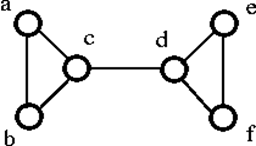
The above graph G can be disconnected by removal of the single vertex either 'c' or 'd'. Hence, its vertex connectivity is 1. Therefore, it is a 1-connected graph.
Next TopicCoverings
|
 For Videos Join Our Youtube Channel: Join Now
For Videos Join Our Youtube Channel: Join Now
Feedback
- Send your Feedback to [email protected]
Help Others, Please Share










